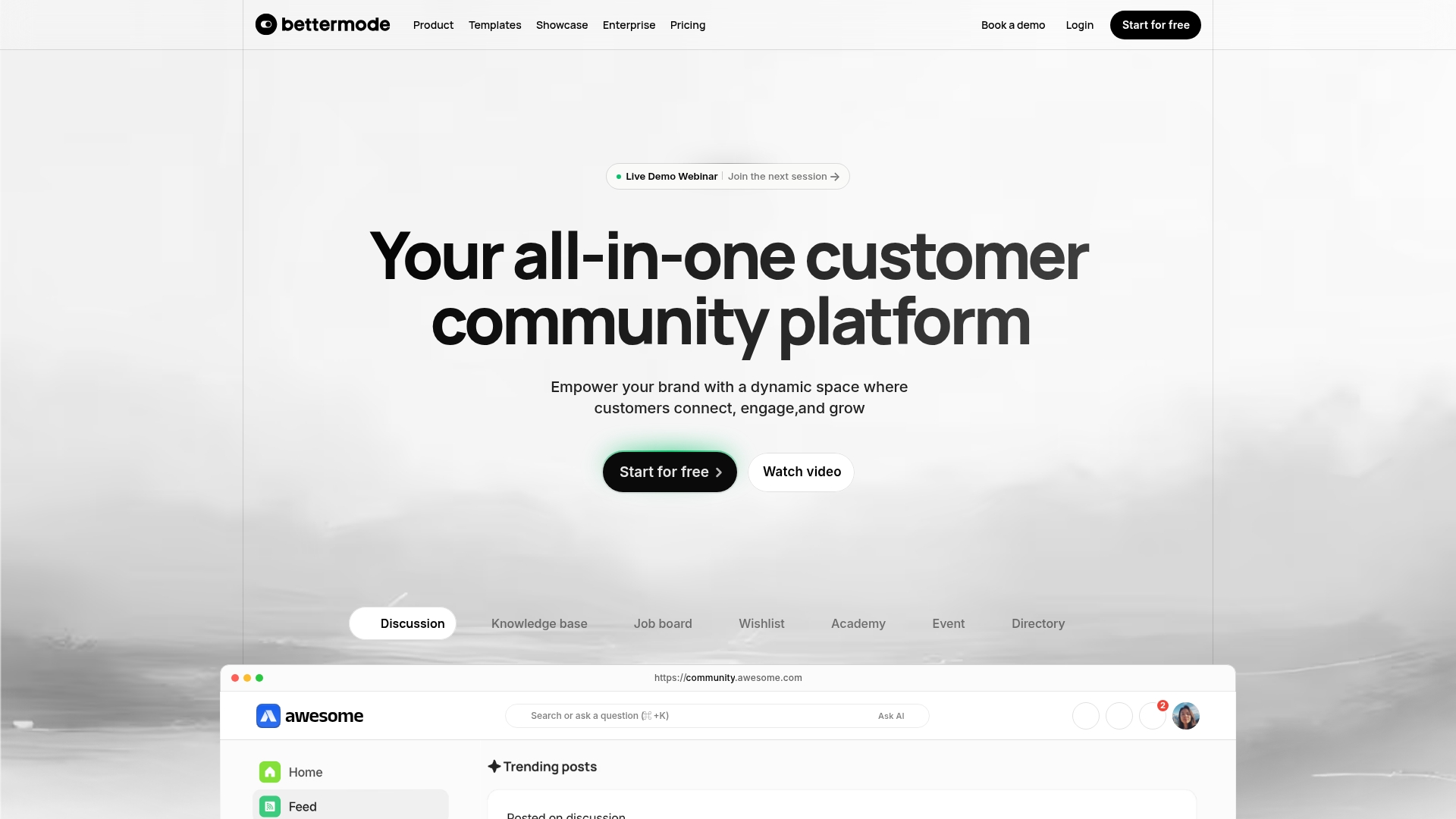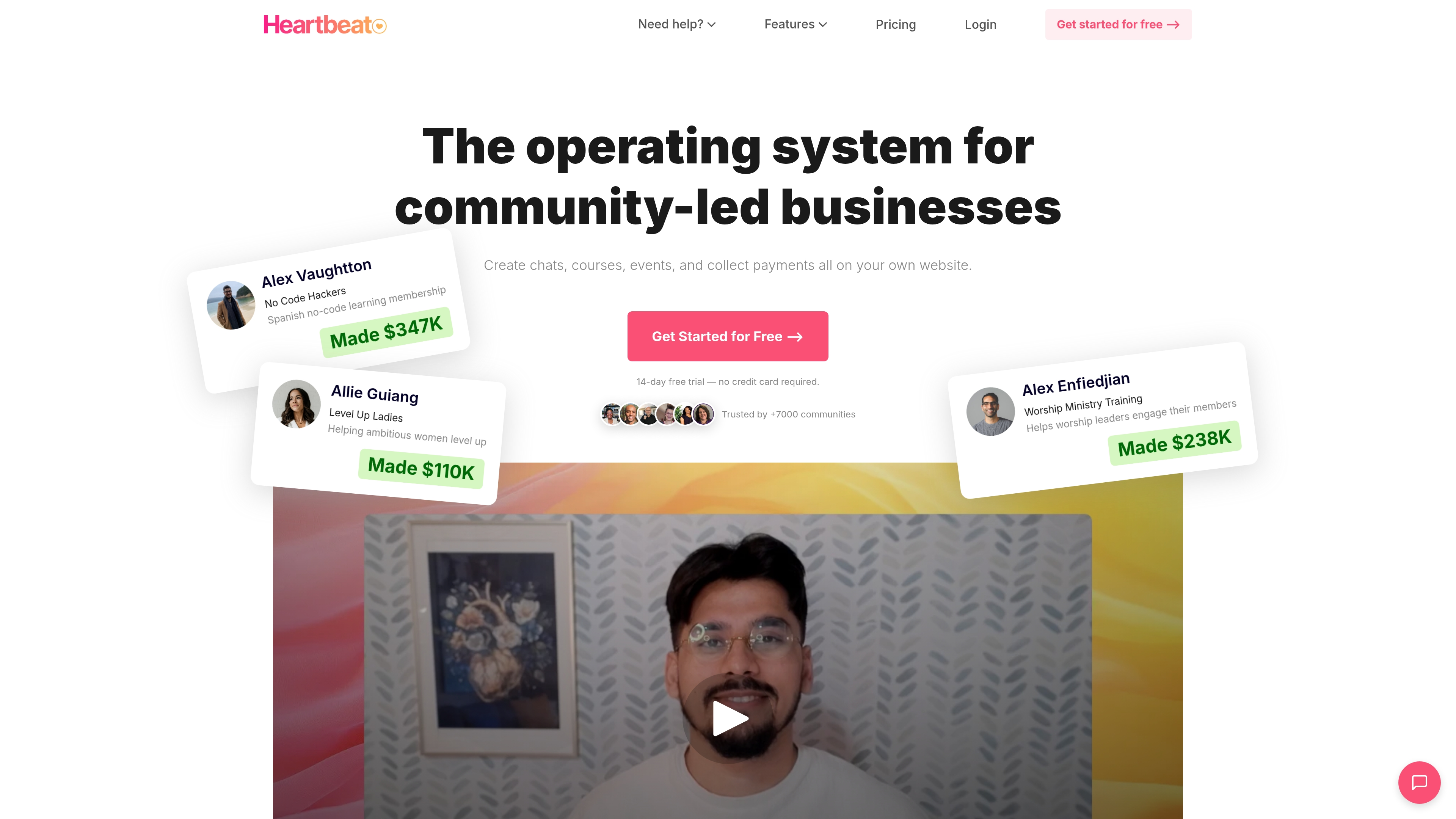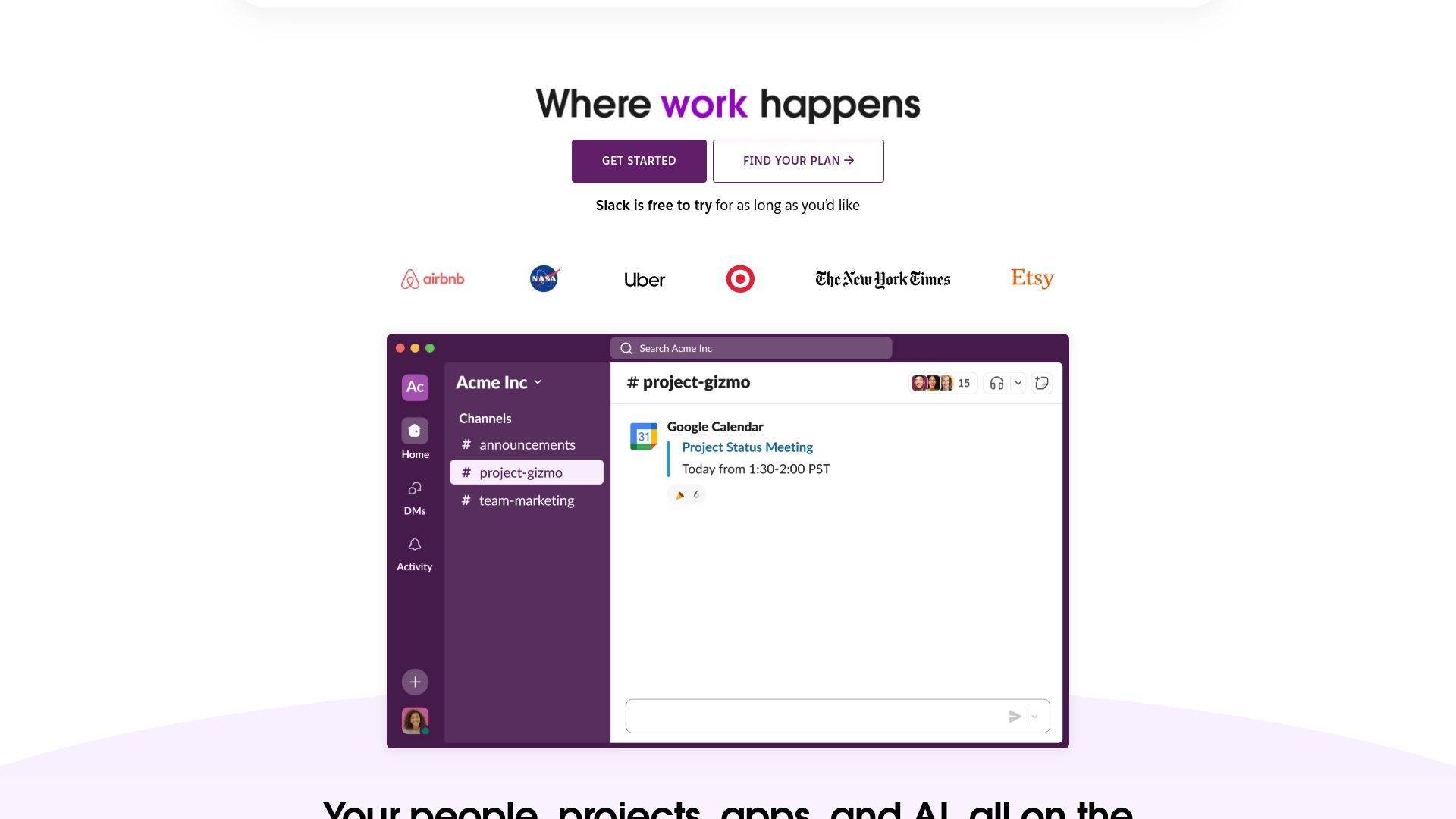Best Community Platforms for Higher Education in 2025

TL;DR
Why a Community Platform Drives Modern Higher Education
Platforms built for higher education provide structured, secure environments where students and faculty can share resources, collaborate on research, and engage in meaningful discussions. They also promote peer connections and professional networking, creating opportunities for learners to grow academically and socially.
In fully virtual or hybrid environments, community platforms help build a sense of belonging. By integrating with tools like video conferencing systems, learning management systems (LMS), and payment processing software, they streamline day-to-day interactions and remove barriers to engagement.
Artificial intelligence takes these platforms a step further by analyzing participation patterns and learner behavior. These insights allow institutions to design more effective programs, improve student engagement, and monitor progress with greater accuracy.
The Rise of Virtual Engagement
Colleges and universities are shifting toward more interactive approaches to virtual events. Platforms now offer tools that go beyond basic webinars or static forums, making it easier to host breakout discussions, conduct live polls, or facilitate collaborative sessions.
Hybrid events are also gaining popularity, as they offer opportunities for ongoing interaction. Alumni panels, faculty-led workshops, and study groups are just a few examples of how virtual gatherings can keep communities engaged, even outside of traditional classroom schedules.
Key Considerations When Selecting a Higher Education Community Platform
Scalability
A platform’s ability to grow with your institution is non-negotiable. Whether you’re onboarding hundreds of students or managing tens of thousands, the system must deliver a seamless experience for everyone involved. Scalability ensures that no matter how your programs expand, learners and faculty continue to experience the same high level of interaction and functionality.
Branding
The identity of your institution isn’t just visual—it’s emotional. A platform that allows full customization of colors, logos, and layouts ensures that every interaction feels aligned with your institution’s unique mission. A well-branded platform reinforces trust and creates a learning environment that feels cohesive and familiar.
Data Privacy and Compliance
With stringent regulations like FERPA and GDPR, safeguarding personal data is more important than ever. Any platform you choose must deliver compliance as a foundational feature, not an afterthought. Secure data handling, encrypted communications, and detailed privacy controls ensure that your learners and educators can focus on engagement without worry.
Rich Media Features
The ability to integrate live video, share files, or deliver courses directly within the platform is a cornerstone of effective online learning. These tools enable interactive experiences that go beyond static discussions, keeping learners engaged and encouraging meaningful participation. Look for platforms that provide a dynamic media toolkit to match the needs of your educators and students.
Social Learning Tools
Engagement thrives on collaboration. Features like discussion forums, group-based activities, polls, and gamification create opportunities for learners to connect, share ideas, and challenge each other. Social tools transform isolated online sessions into vibrant, interactive learning communities where participants feel motivated to stay involved.
Analytics
Data is the key to improvement. A platform with robust analytics allows you to monitor learner activity, track progress, and measure completion rates. These insights empower administrators and educators to refine programs, identify areas for support, and celebrate milestones—all with confidence that decisions are grounded in real-time data.
8 Best Community Platforms for Higher Education in 2025
Community platforms are redefining how higher education fosters connection, collaboration, and growth. With tools that integrate learning experiences, events, and social engagement, these platforms are creating spaces where faculty and students thrive. Here are eight standout platforms shaping the future of education in 2025.
1. Unified Learning Hubs
Education works best when everything is in one place. Unified platforms combine social interaction, live learning, and content delivery into a seamless solution. They offer event hosting, discussion spaces, and resource-sharing tools, making it simple for universities to manage programs while providing an engaging experience for students and educators.
2. Scalable Ecosystems
Growth can bring complexity, but some platforms are built to handle it. Scalable solutions ensure that whether a university is managing a small cohort or a global program, the experience remains consistent. These platforms grow alongside the institution, supporting increased enrollment without compromising functionality or engagement.
3. Customizable Spaces
A strong academic identity builds trust. Customizable platforms allow universities to design their online communities in a way that reflects their brand. From visual layouts to messaging, these platforms adapt to institutional values, creating a cohesive and professional experience for learners and faculty alike.
4. Privacy-Centric Designs
The importance of data security in education cannot be overstated. Privacy-first platforms go beyond compliance, offering features like encrypted communications, detailed permissions, and user-centric privacy controls. These tools help institutions protect sensitive information while maintaining seamless access for students and staff.
5. AI-Enhanced Engagement
Some platforms take connection and motivation to the next level. By analyzing user behavior, AI-powered tools can personalize learning, identify participation gaps, and suggest adjustments to keep communities active. This makes it easier to create meaningful interactions that drive better outcomes for everyone involved.
6. Interactive Media Tools
Rich media can transform the way students and educators connect. Platforms with live video, integrated course tools, and interactive features allow for dynamic learning experiences. Whether it's a live seminar, a collaborative project, or an asynchronous lecture, these tools bring education to life.
7. Collaboration-Focused Platforms
Learning thrives in a collaborative environment. Platforms with features like discussion forums, polls, and gamified activities encourage participation and foster a sense of community. These tools are ideal for creating vibrant spaces where students feel connected and supported.
8. Insight-Driven Solutions
Data is a powerful tool for growth. Platforms with advanced analytics help administrators and educators understand engagement, track progress, and refine program delivery. This feedback loop ensures continuous improvement and a more effective learning experience for all.
Top AI-Driven Platforms for Higher Education Communities
Explore the standout community platforms shaping higher education in 2025. These tools foster collaboration, engagement, and seamless learning experiences, with Disco leading the way in AI-powered innovation.
| Platform | Best For | Main Features | Pricing |
|---|---|---|---|
| Disco | AI-powered social learning and engagement | AI for engagement, branded environments, real-time analytics, multi-modal tools (video, events, discussions) | Starts at $359/month |
| Circle | Flexible community building | Topic-specific spaces, custom branding, live events, API integrations | Starts at $89/month |
| Mighty Networks | Dynamic community creation | Interactive feeds, mobile apps, livestreaming, paid courses | Starts at $41/month |
| Bettermode | Customizable and modular communities | Modular design, API/webhooks, multilingual support, advanced engagement tools | Free plan; Pro starts at $49/month |
| Kajabi | All-in-one course and community platform | Course hosting, marketing funnels, memberships, analytics | Starts at $89/month |
| Heartbeat | Interactive small group communities | Cohort-based courses, live events, document sharing, payment tools | Starts at $49/month |
| Swarm | Video-first collaboration | AI transcription, video lounges, threaded chats, live/recorded sessions | Pricing not provided |
| Slack | Real-time communication and collaboration | Channels, AI-powered search, app integrations, workflow automations | Free; Pro starts at $8.75/month |
Disco

Disco is where intelligent design meets meaningful learning. Built for training businesses and institutions, Disco brings AI-powered tools into every layer of program creation and delivery. It’s not just about managing a learning community—it’s about making every interaction smarter, every process smoother, and every learner more engaged.
From curriculum design to seamless automations, Disco ensures the operational heavy lifting happens behind the scenes, so leaders can concentrate on building impactful programs. Social feeds, real-time analytics, and branded spaces encourage connection and keep learners actively engaged, while AI-driven nudges and workflows take care of the details. The result? A streamlined experience that balances efficiency with creativity.
Key Features:
• AI-enhanced tools for personalized engagement and support
• Customizable, fully branded environments for unique identities
• Advanced analytics for tracking progress and refining strategies
• Multi-modal options, including video, group discussions, and live events
Circle
Circle offers a flexible and beautifully designed platform for building and managing online communities. With its focus on simplicity and structure, Circle enables organizations to create dedicated spaces for discussions, events, and member interaction, all tailored to specific courses, interests, or professional goals.
Circle’s streamlined tools make it easy to host live sessions, organize topic-based forums, and manage private groups—all while maintaining a polished, branded experience. Its open API supports integrations like single sign-on (SSO), allowing seamless connection with other tools to ensure smooth user access and administration.
Key Features:
• Dedicated, topic-specific community spaces
• Fully customizable branding and domains
• Tools for live events and interactive engagement
• API integrations for extended functionality
Mighty Networks

Mighty Networks provides a flexible framework for building online communities that prioritize connection and engagement. Its platform enables organizations to create spaces for dynamic interactions, organize events, and bundle learning content into cohesive experiences.
With tools like discussion boards, mobile apps, and structured polls, Mighty Networks ensures learners can interact effortlessly, whether they’re at home or on the move. Its social media-inspired approach fosters a sense of belonging, encouraging ongoing participation and collaboration across groups. For teams looking to integrate community-building with learning, Mighty Networks offers a straightforward and adaptable solution.
Key Features:
• Intuitive feeds and interactive discussion boards
• Mobile apps for seamless accessibility
• Flexible options for paid subscriptions and bundled courses
• Integration with tools like Zoom for live sessions
Bettermode

Bettermode takes a modular approach to community building, giving organizations the flexibility to create purpose-driven spaces. With tools that allow for customizable layouts, intuitive navigation, and seamless integrations, it’s designed to meet the needs of diverse cohorts and contexts. The platform’s API and webhook capabilities enable advanced workflows, while multi-language support ensures accessibility for global audiences.
Key Features:
• Modular, customizable interface for tailored experiences
• Integrations with CRMs and marketing tools for streamlined data flow
• Multi-language options for global reach
• API and webhook functionality for workflow automation
Kajabi

Kajabi provides a streamlined approach for organizations and creators looking to manage online courses, communities, and monetization under one roof. Its focus on ease of use, combined with tools for marketing automation and membership management, makes it a popular choice for teams building smaller, specialized learning programs. With pre-built templates and integrated communication features, Kajabi simplifies the process of launching and scaling online education experiences tailored for niche audiences.
Key Features:
• Automated sales funnels and email marketing tools
• Flexible course hosting with options for assessments and memberships
• Centralized communication via email, live events, and announcements
• Intuitive templates for fast, polished program setup
Heartbeat

Heartbeat provides an intuitive platform designed to bring group coaching and smaller, course-based communities to life. Focused on simplicity and connection, it excels at creating spaces where learners and educators engage seamlessly through live workshops, events, and discussions.
The platform integrates features like audio rooms for instant dialogue, automated payment tools to streamline operations, and affiliate management to grow reach. With its focus on user experience, Heartbeat makes building and nurturing interactive learning communities both precise and efficient.
Swarm

Swarm focuses on building connections through video-first interactions. It creates a space where live classes and virtual lounges become more than just sessions—they become moments for engagement and collaboration. With built-in AI for transcription and subtitling, it bridges accessibility gaps while maintaining seamless communication. Designed around shared video experiences, it’s an option for educators and teams who value interaction but may require integrations for more traditional tools.
Key Features:
• Video-first environment for dynamic collaboration
• AI tools for real-time transcription and subtitles
• Threaded chats to keep conversations organized
• Flexible support for both live and recorded sessions
Slack

Slack brings immediacy and simplicity to workplace communication, making it a staple for teams seeking to stay connected without email overload. Its channel-based structure fosters focused discussions, while direct messaging and video huddles make collaboration seamless. For smaller teams or faculty groups, it’s a highly adaptable tool that works well for real-time brainstorming and sharing resources.
Key Features:
• Organized conversations through channels
• Automations via Workflow Builder to streamline tasks
• Voice and video call capabilities for dynamic interaction
• Integrations with tools like Google Drive and Office 365 for a unified workflow
Building an Engaging Community Experience
An impactful learning community thrives on interaction, collaboration, and inclusivity. At its core, this means creating spaces for members to connect and share knowledge in meaningful ways. Peer-led activities, such as moderated discussions or collaborative projects, encourage participants to take initiative while fostering a culture of continuous engagement. These interactions aren’t just enriching—they build stronger connections among learners and educators alike.
Maintaining a positive community environment starts with thoughtful moderation tools. Features like content guidelines, flagging systems, and community standards help ensure that discussions remain respectful and inclusive. By cultivating a safe space for dialogue, you empower every member to contribute with confidence, knowing their perspectives are valued and protected.
Flexibility is key to sustaining engagement across diverse groups. Offering multiple communication formats—such as live video sessions, asynchronous forums, or text-based chats—ensures that every individual can participate in a way that aligns with their schedule and preferred style of engagement. This adaptability enables your learning community to stay accessible and dynamic, no matter how or when members choose to connect.
A clear and welcoming onboarding experience sets the tone for long-term success. Providing step-by-step guidance, tailored introductions, or even AI-powered walkthroughs ensures that learners, faculty, and staff can quickly navigate the platform and understand its features. By removing friction from the onboarding process, you create an environment where members feel supported from day one—ready to explore, collaborate, and grow.
Frequently Asked Questions
How do platforms like Disco ensure data security?
Data security is non-negotiable when it comes to learning platforms. Industry leaders integrate features like encryption, secure authentication, and compliance with regulations like GDPR and FERPA. Before you commit, it’s worth checking if the platform aligns with your organization’s privacy standards to protect both learner and institutional data.
Can a platform like Disco integrate with existing LMS tools?
Integration is key to a seamless experience, and platforms like Disco offer APIs and native integrations that connect with widely used LMS solutions. This ensures that learners and instructors can navigate between community spaces and course materials effortlessly, creating a unified learning ecosystem.
Do online communities replace in-person experiences?
Not at all. Instead of replacing traditional interactions, platforms like Disco enhance them. Hybrid models—where face-to-face sessions are complemented by digital engagement—allow organizations to offer constant connection while preserving the unique benefits of in-person learning.
Can community platforms support smaller groups, like student clubs?
Community platforms thrive on fostering connections, making them perfect for hosting subgroups like student clubs or professional networks. With private channels and customizable spaces, platforms like Disco enable groups to dive deeper into specific interests while maintaining a broader connection to the overall community.
How do you maintain engagement after the initial launch?
Keeping learners engaged means going beyond introductory excitement. Regular updates, interactive content, and recognition for contributions go a long way. For example, Disco’s tools encourage ongoing participation through gamification, faculty involvement, and peer-to-peer discussions, ensuring that the community feels alive and rewarding over time.
The future of community-driven learning is here, and platforms like Disco are setting the standard for adaptability, connection, and intelligent design. If you’re ready to transform your approach to learning, book a demo today and see how Disco can fit seamlessly into your vision. Whether you’re scaling a program or tailoring unique learning experiences, Disco is here to help. Ready to see it in action? Book a demo now and take the next step toward elevating how your organization learns together.










